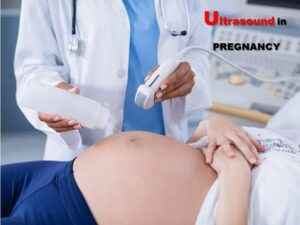Symptoms, Causes, and Uterine Prolapse Treatment in Hyderabad
Pelvic floor muscles and uterine ligaments provide support to the uterus so that it is positioned in place. When these muscles and ligaments stretch and become weak, they no longer support the uterus. The uterus thus dislocates from its position and drops down into the vagina or protrudes out of it. A woman can have this condition owing to many causes. The prolapsed uterus is usually seen in postmenopausal women.
Women who have had a difficult labour, more than one or two vaginal deliveries, may have weak muscles. With aging, there is a natural drop in Estrogen hormone, which could be the cause of prolapsed uterus.
Degrees of Uterine Prolapse
The prolapse depends on the extent of the weakness of the supporting structures (muscles and ligaments that hold the uterus). The prolapse occurs in the following stages:
- 1st Degree: The cervix drops into the vagina (descends down into the vagina)
- 2nd Degree: The cervix dangles to the position within the opening of the vagina (incomplete prolapse). There is a bulge or lump inside the vagina.
- 3rd Degree: The cervix comes outside the vagina.
- 4th Degree: The entire uterus comes outside the vagina (procidentia or a complete prolapse). This happens in more severe cases.
Descent of other surrounding structures in front and behind the uterus:
Enterocele: The upper rear vaginal wall bulges or herniates and a small bowel portion bulges into the vagina.
Cystocele: The upper front wall of the vagina bulges or herniates and a part of the urinary bladder bulges into the vagina.
Rectocele: The lower rear vaginal wall herniates and the rectum bulges in the vagina.
Symptoms of Prolapsed Uterus
- Protrusion of uterine tissue
- Discomfort in the pelvic region
- Pain during sexual intercourse
- Lower back pain
- A feeling of pelvic pressure or fullness in the abdomen
- Urine retention or Urinary incontinence (urine leakage)
- Difficulty during bowel movements and urination
- Discomfort while walking
- Feeling as if something is falling out of the vagina
Uterine Prolapse Causes
Pelvic muscles and ligaments become weak in women due to the following causes:
- Two are more vaginal deliveries
- Pregnancy
- Trauma during childbirth or delivery and difficult labor
- Delivery of a large baby
- Obesity or excess body weight
- Menopause (low Estrogen levels)
- Bronchitis or chronic cough
- Applying pressure or straining with bowel movements
- Lifting heavy weights
- Mass per abdomen
The Risk Factors for Uterine Prolapse
- Advancing age
- Weak muscles
- Excess body weight
- Two or more pregnancies and vaginal births
- Connective tissues weakness owing to a family history
- Frequent straining during bowel movements
- Chronic constipation
- Prior pelvic surgery
Diagnosis of Uterine Prolapse
A gynecologist diagnoses uterine prolapse during a routine gynecological check-up involving a pelvic examination.
During a typical pelvic examination, the gynecologist may ask you to contract or tighten your pelvic floor muscles to check the strength of your pelvic muscles. You will be asked to contract pelvic muscles as if having a bowel movement or stopping a stream of urine in between (Kegel’s exercise). To assess the uterine, prolapse comprehensively, the gynecologist may ask a few questions to you.
If you have severe urinary incontinence, she will order urodynamic testing.
Uterine Prolapse Treatment
If you don’t have any discomfort or symptoms due to mild uterine prolapse then self-care measures may help prevent worsening prolapse. You don’t need specific uterine prolapse treatment.
To ensure this, you must do three things – treat your constipation, chronic cough or urinary incontinence, lose weight (if you are obese), and perform Kegel exercises to strengthen pelvic floor muscles.
But if uterine prolapse makes you uncomfortable or disrupts your normal life, you might benefit from uterine prolapse treatment involving surgery.
Vaginal or minimally invasive laparoscopic surgery is the best option to repair uterine prolapse. Laparoscopic abdominal surgery uses patients’ own tissue or synthetic material onto weakened pelvic floor muscles to strengthen and support pelvic organs. However, in old age patients, complete uterus is removed (laparoscopic hysterectomy or vaginal hysterectomy).




